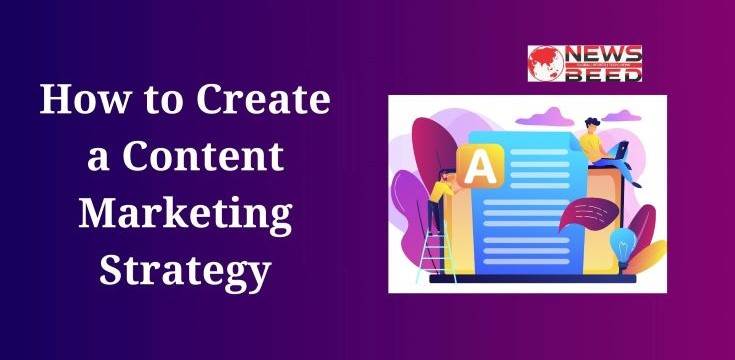Creating an effective content marketing strategy is the key to driving engagement, building brand authority, and ultimately, achieving your business goals. It begins with a clear understanding of your target audience, their needs, and preferences. By aligning your content with their interests and pain points, you can create valuable and relevant content that resonates. This strategy should also outline your content goals, distribution channels, and a plan for consistent, high-quality content creation. With a well-defined content marketing strategy, you can establish a strong online presence and connect with your audience in a meaningful way.
1. Understanding Content Marketing
1.1 What is Content Marketing?
Content marketing is a strategic marketing approach focused on creating and distributing valuable, relevant, and consistent content to attract and engage a specific target audience. Instead of overtly promoting products or services, content marketing aims to provide information, solve problems, or entertain, establishing trust and authority with the audience.
1.2 Why is Content Marketing Important?
- Builds Brand Awareness: Regularly publishing valuable content helps your brand become more recognizable and trusted in your industry.
- Engages Your Audience: Content that resonates with your audience keeps them engaged and coming back for more.
- Drives Conversions: High-quality content can lead to increased conversions and sales as your audience trusts your expertise.
- Improves SEO: Search engines value fresh, relevant content, making content marketing a crucial part of SEO efforts.
- Cost-Effective: Compared to traditional advertising, content marketing often provides a higher return on investment.
Also, Read This: What is Digital Marketing in Hindi
2. Setting Goals and Objectives
2.1 Defining Your Business Objectives
Before diving into content creation, it’s essential to define your business objectives. These could include:
- Increasing brand awareness: If you’re a new business or entering a new market, you might prioritize brand exposure.
- Generating leads: If your goal is to collect contact information from potential customers, lead generation will be a primary objective.
- Boosting sales: For e-commerce businesses or those focused on immediate conversions, driving sales might be the primary aim.
- Educating your audience: Some businesses need to educate their customers about complex products or services.
2.2 Identifying Your Target Audience
Understanding your audience is vital. Create buyer personas – detailed profiles of your ideal customers. Consider demographics, psychographics, pain points, and preferences. Knowing your audience helps tailor your content to their needs and interests.
3. Market Research and Competitor Analysis
3.1 Conducting Market Research
Market research involves gathering data about your industry, audience, and market trends. Tools like Google Trends, industry reports, and customer surveys can be invaluable. Key aspects to explore include:
- Audience behavior: What topics interest them? What platforms do they use?
- Competitor performance: Analyze your competitors’ content strategies to identify gaps and opportunities.
- Keyword research: Understand the keywords your audience uses to search for information related to your industry.
3.2 Analyzing Your Competitors
Competitor analysis helps you understand what’s working in your industry and what isn’t. Look at their content quality, distribution channels, and engagement metrics. Identify gaps in their content strategy that you can fill with your own content.
4. Content Creation and Planning
4.1 Choosing Content Types
The type of content you create depends on your audience and goals. Common content types include:
- Blog Posts: Informative articles on relevant topics.
- Videos: Engaging visual content for platforms like YouTube or social media.
- Infographics: Visual representations of data or information.
- Podcasts: Audio content that can reach a different audience.
- E-books and Whitepapers: In-depth resources that showcase your expertise.
- Social Media Posts: Short, frequent updates to engage your audience.
4.2 Content Calendar
A content calendar helps you plan and organize your content production and distribution. It ensures consistency and helps you align content with events, holidays, and product launches.
4.3 Quality vs. Quantity
While consistency is crucial, prioritize quality over quantity. Producing high-quality, valuable content will have a more significant impact on your audience.
5. Content Distribution
5.1 Leveraging Multiple Channels
To reach your target audience effectively, distribute your content across multiple channels. This might include your website, social media, email marketing, and guest posting on relevant blogs.
5.2 SEO Optimization
Optimize your content for search engines by incorporating relevant keywords, meta tags, and high-quality backlinks. This helps improve your content’s visibility in search engine results.
5.3 Paid Promotion
Consider investing in paid promotion to boost the visibility of your content. Options include social media advertising, pay-per-click (PPC) campaigns, and sponsored content.
6. Measuring and Analyzing Results
6.1 Key Performance Indicators (KPIs)
Track and measure your content marketing efforts with key performance indicators, such as:
- Traffic: The number of visitors to your website or landing pages.
- Engagement: Metrics like likes, shares, comments, and time spent on your content.
- Conversions: How many visitors take the desired action, such as signing up for a newsletter or making a purchase.
- ROI: Calculate the return on investment for your content marketing efforts.
Also, Read This: What is SEO? Type and Key Factors of SEO
6.2 Analytics Tools
Utilize analytics tools like Google Analytics, social media insights, and email marketing analytics to gather data and assess the performance of your content.
6.3 Continuous Improvement
Regularly review your content marketing strategy, analyze results, and make adjustments. Content marketing is an iterative process, and ongoing improvement is essential for long-term success.
Conclusion
Creating a content marketing strategy is a multifaceted process that requires careful planning and execution. By understanding your business objectives, target audience, and competition, you can develop a strategy that engages your audience, drives results, and helps your business grow. Remember that content marketing is an ongoing effort, so continuously analyze and adapt your strategy to stay relevant and effective in your industry.





At last, somehthing worth reading. It’s great to find postings like this one.